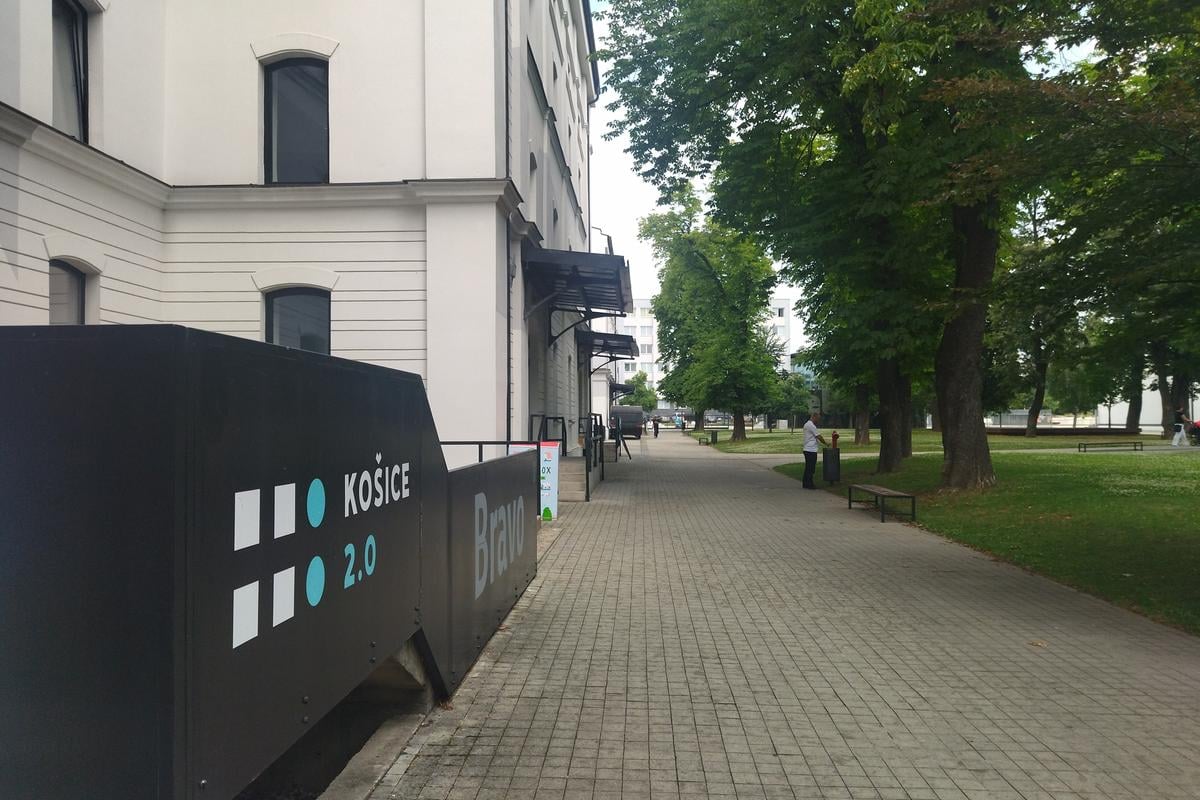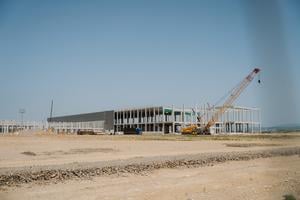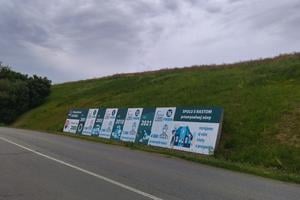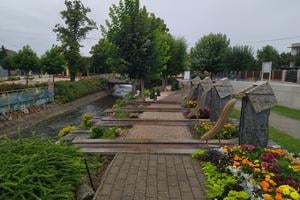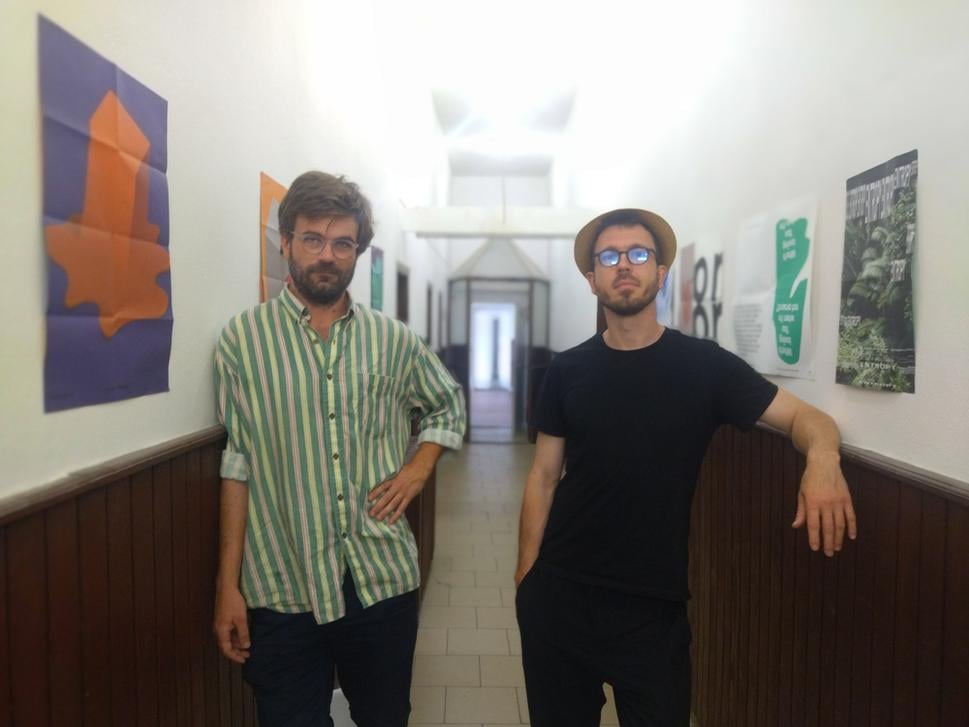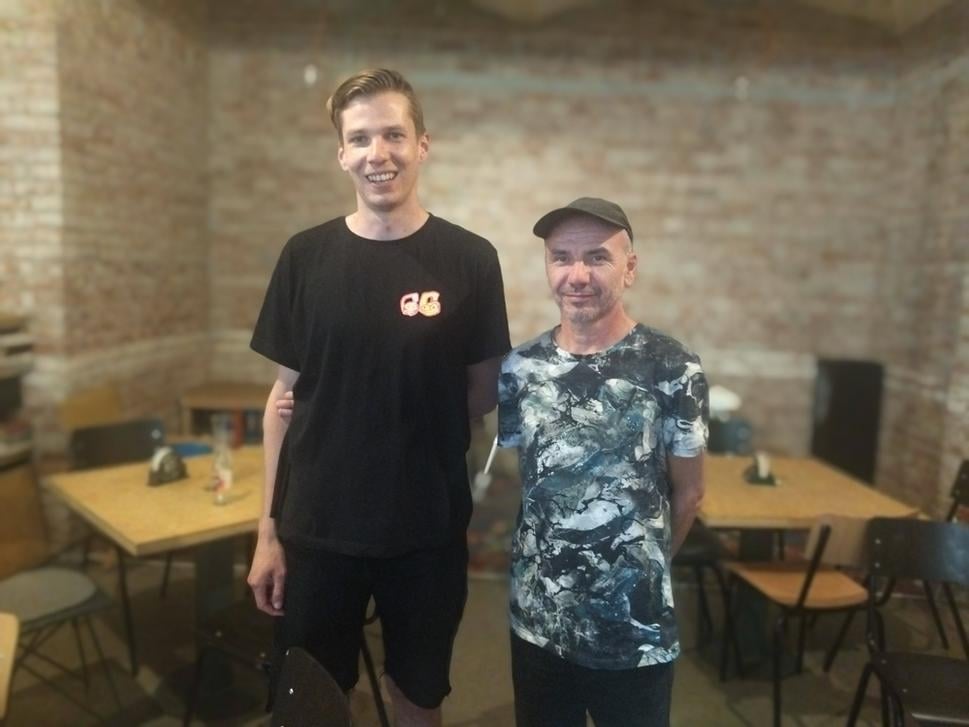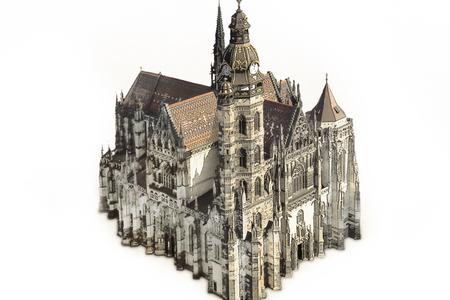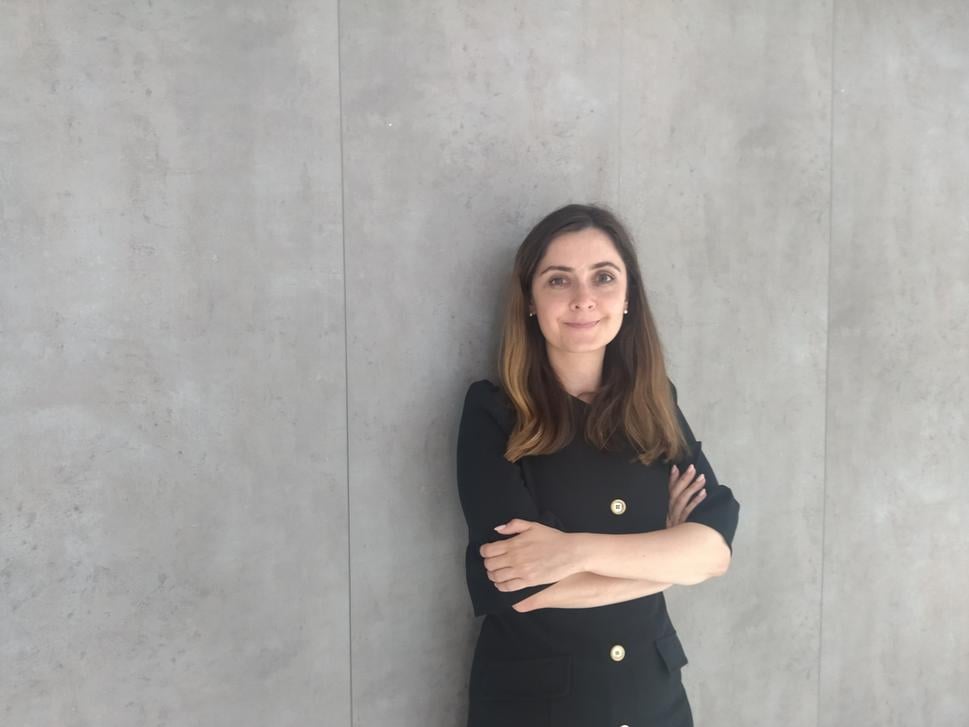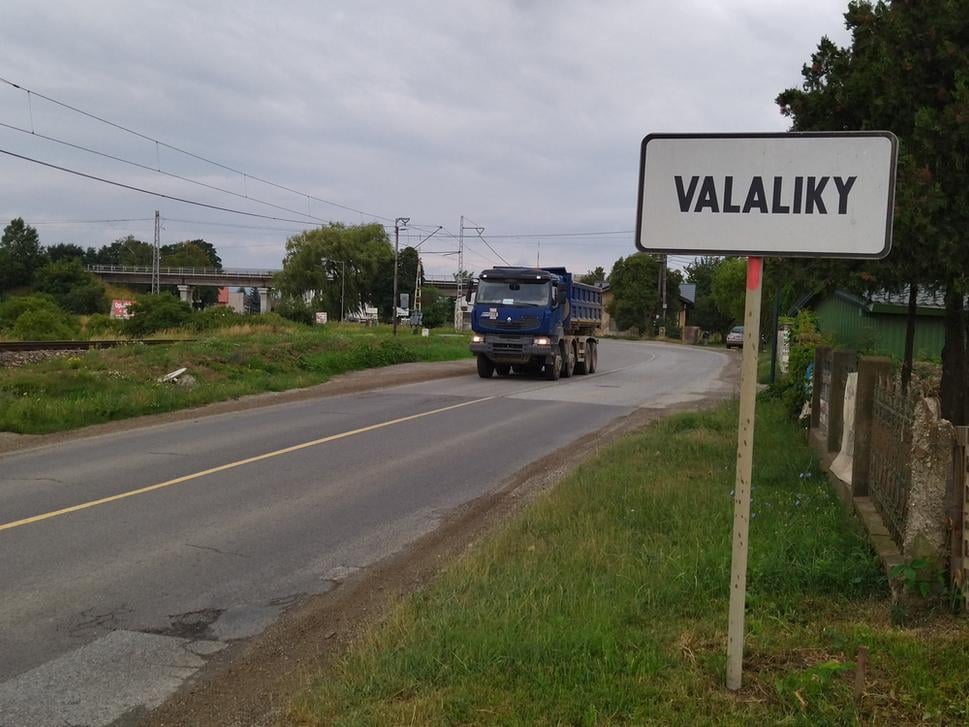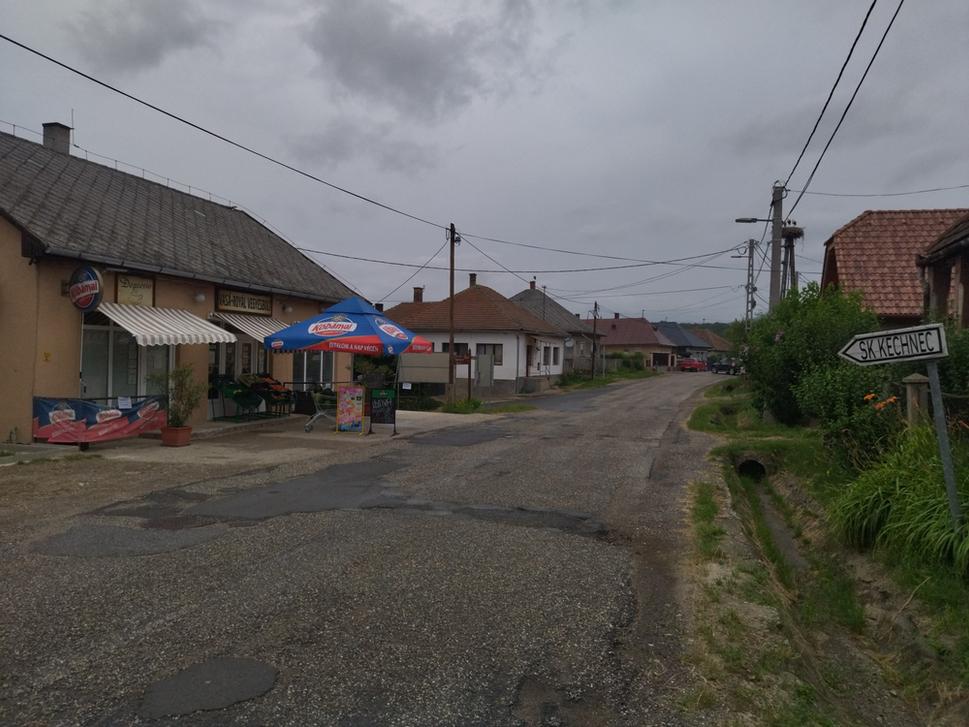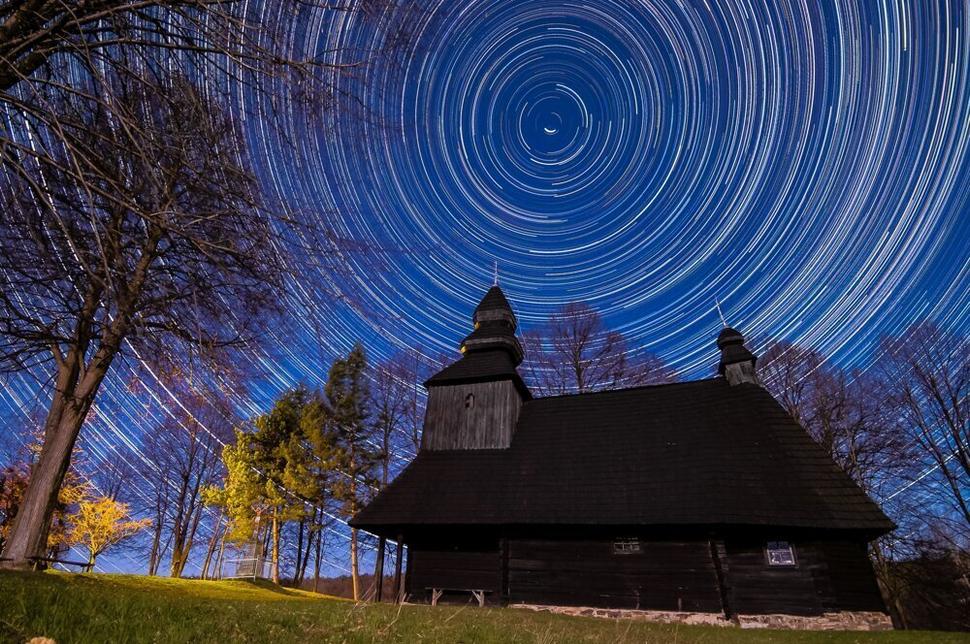You can read this exclusive content thanks to the FALATH & PARTNERS law firm, which assists American people with Slovak roots in obtaining Slovak citizenship and reconnecting them with the land of their ancestors.
Arriving in Košice by car, finding affordable parking is a top priority, especially if your hotel does not offer a spot. Fortunately, I discovered a convenient public parking lot just a short walk from Hlavná ulica (Main Street), costing only €3 a day.
As it turned out, Košice is a city where everything feels delightfully close: I found that all my meetings were within a brisk 15-minute walk or a quick 10-minute electric scooter ride from the heart of the city. This compactness made exploring Košice a breeze.
Trips for curious travellers
During my time in Košice, I had the pleasure of meeting Igor Kupec, a former graphic designer whose journey took a thrilling turn six years ago. Discovering a newfound passion for travel, Kupec, alongside his friend Richard Oľhava, launched Local Nomad—a unique travel agency dedicated to showcasing the lesser-known wonders of Košice and its surroundings.
Unlike conventional tours, their carefully curated experiences go beyond the city's renowned historical monuments, offering visitors a deeper, more authentic exploration. With minimal marketing and a savvy use of the Internet, social networks, and strategic hotel partnerships, Local Nomad has become the go-to choice for curious travellers.
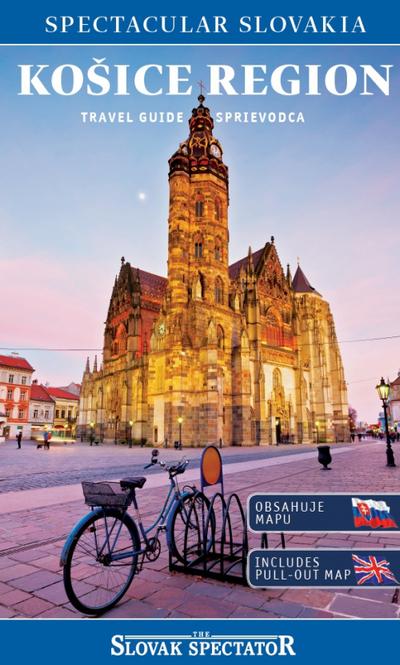
Košice has become a popular destination for tourists, thanks to the arrival of low-cost airlines connecting the city to Ireland and Britain. Additionally, there are connections to Košice from Vienna, Prague, and Warsaw. The city is particularly appealing to foreign visitors due to its UNESCO-listed monuments.
Oľhava mentions that they mainly take tourists to the Spiš and Gemer regions, where there are up to 19 UNESCO-listed monuments. Trips typically cost between €100 to €200 per person per day, depending on the destination.
The clients come from diverse backgrounds and countries, seeking unique experiences away from popular tourist destinations.
"These are people who want to experience something different from regular big cities like Prague or Budapest. That's why we take them to islands of positive deviance, monuments that are privately owned. For example, the Zlá diera (Evil Hole) cave or the wall paintings in Žehra," explained Oľhava.
Some are also lured to a climbing rock in the Hájska dolina valley, he added.
Most of the visitors have the so-called Košice syndrome.
"They do not know what to expect from this city. Many are pleasantly surprised and even excited, others are disappointed," Kupec said, describing tourists' reactions.
They are especially surprised by the number of monuments, the cleanliness of the city and disappointed by the prices of services, which are not so cheap in Slovakia compared to the West.
The guiding business is seasonal, with spring and autumn being strong seasons.
“The goal is to attract more local clients to cover the weaker summer weeks,” Kupec said.
Historical names of towns and villages in Košice and Košice district
Discover Eastern Slovakia with our Košice Guide.
Today's territory of Slovakia was part of different monarchies throughout history, including the Austro-Hungarian Empire from 1867 until 1918. Until 1992, with the exception of the inter-war years 1939-1945 during which the Nazi-aligned Slovak state existed, the territory was a part of Czechoslovakia. As a result, the current names of Slovak municipalities were different.
Here's a list of the largest municipalities in Košice district with their historical names stated in brackets:
Košice (Kassa)
Medzev (Mecenzéf)
Jasov (Jászó)
Moldava nad Bodvou (Szepsi)
Turňa nad Bodvou (Torna)
Štós (Stósz)
Other villages mentioned in the story:
Kechnec (Kenyhec)
Perín-Chym (Perény, Hím)
Valaliky (Bernátfalva)
Trstené pri Hornáde (Abaújnádasd)
Nižná Myšľa (Alsómislye
Malá Ida (Kisida)
The full list of all Slovak municipalities, including their historical names, can be found at ww.geni.sk (in Slovak only).
Culture centres still live
In 2013, Košice was named the European Capital of Culture. Former industrial buildings were renovated with European funds and transformed into cultural hubs. These venues, such as Kunsthalle and Kasárne-Kulturpark, have not only survived but are thriving today.
The status enhanced the creative industry in Košice and the infrastructure is still visible and functional, according to Martin Dani, director of the organisation K13 Košické kultúrne centrá (K13 Košice Cultural Centres). The venues were meant to have a five-year sustainability plan but continue to operate today. Some have evolved in use, like the Bravo building (part of the Kasárne-Kulturpark complex), initially planned as a coworking place. Today, it also works as an art museum and a library. The Bravo building charges commercial rent and hosts local startups and a development centre for Tatra banka, one of the largest banks in Slovakia.
Another successful project in Košice is the transformation of unused heating substations in housing estates into local cultural centres. Last year, K13 organised around 4,000 events, including concerts and local activities.
The former military barracks (kasárne), Kasárne - Kulturpark, now serve as a space for festivals, concerts, and exhibitions, while the SteelPark offers science and technology demonstrations for children.
"Tourists also come here, but mostly when there is a big event," added Dani.
He plans to collaborate with local companies that use their premises for events, including Volvo, which is building a factory for electric cars near Košice.
"The culture would not work without commercial partners. The city contributes about €2 million annually, covering only about half of the costs,”said the director of K13.
Tabačka exists thanks to its pub
In 2013, Peter Radkoff and his team embarked on a groundbreaking project with the creation of the Kasárne-Kulturpark complex. However, they were asked to leave the area, so they found a new venue. By 2015, they had refurbished the rundown building of a former tobacco factory and its surroundings. Transforming this neglected relic into a vibrant cultural hub, they named it Tabačka.
The area also includes Fabricafe, a spacious pub-like space with a brick-like interior, and a coworking space for young entrepreneurs.
Initially, this cultural centre was independently operated and was only supported by the Košice Region, which owns the building. Later, the region withdrew its support, and Tabačka was left to sustain itself.
"We generate 80 percent of our revenue from our own business, and the remaining 20 percent comes from grants," Radkoff, the founder and director of Tabačka Kulturfabrik, explains. According to him, the centre currently lacks institutional support.
They do receive some funding from the Slovak Arts Council (FPU), but it is insufficient and only covers events, not operational costs. Municipalities are unable to directly finance operations, only cultural events. Therefore, the civic association that is behind Tabačka reinvests all profits from its gastronomy business into cultural events.
Their main clients are the residents of Košice, although tourists also visit the area. Tabačka is situated near the city centre, although it is hidden in the yard.
"We aren't a tourist attraction, but people come to us for the restaurant and cultural events, "Radkoff says.
Local IT companies indirectly support them by organising events at Tabačka. However, they find it challenging to secure cultural sponsors in Košice.
"In all corporations, budgets are being cut, and that also affects culture," notes Radkoff.
Recently, their civic association took a loan of €250,000 from a private investment fund to improve the energy efficiency of the old building, which is very energy-intensive.
"We addressed air conditioning, acoustics, and heating," says Tabačka's general manager Filip Kakara.
IT sector supports culture
Tabačka and former military barracks premises are also utilised by IT companies associated with the IT Valley organisation, aiming to create a technologically advanced and innovative business environment in eastern Slovakia. The initiative also supports entrepreneurs in the cultural sector by providing training in creative business.
Miriama Hučková, executive director of IT Valley, emphasises the importance of self-sufficiency in eastern Slovakia and highlights the organisation's commitment to financing cultural initiatives in the region. She notes that the improved gastronomy in Košice is partly due to the influence of the IT sector, which also supports cultural events.
Hučková identifies the need for improvement in housing and education in Košice, particularly to accommodate the requirements of foreign experts relocating to the area. Additionally, IT Valley aims to facilitate collaboration between the automotive industry, represented by companies like Volvo, and IT companies in Košice to work on joint projects such as developing software for cars.
Volvo as game changer
The new Volvo investment in Valaliky, a village near Košice, is shaping up to be a game changer in the city's prosperity and development. The factory is to employ more than 4,000 people, and among them will be many qualified experts and managers.
The announced investment of the Swedish car company is already affecting the lives of people in Košice and the surrounding area, although it is not yet complete.
"People are eager for new job opportunities and to improve their lives," said Martin Seman, spokesperson for Volvo Car Slovakia.
Currently, the car company has 90 employees in various engineering and technical positions. The factory will not hire more people until the end of next year, as it plans to begin production in 2026.
Seman promises that in addition to job opportunities, the company will bring better roads and improved education to Košice and its surroundings.
Arriving in Valaliky from Košice might initially unsettle visitors as they navigate a narrow, potholed road, often congested with heavy lorries. However, this rough start quickly fades into memory as the charm of the village begins to unfold. Once a driver passes the threshold into Valaliky, they will be greeted by well-maintained bicycle lanes, neatly paved pavements, and a restored school. The refurbished local church and municipal office also stand as proud testaments to the village's commitment to being a great place to live.
A new health centre and bustling public market with a stage for cultural events have recently transformed the local landscape. According to Mayor Štefan Petrík, these exciting developments underscore a thriving, forward-thinking village that stands proudly on its own merits.
"We are a vital village with 4,500 people, we have low unemployment, young people from Košice are also moving here, and we are planning to build new houses. Volvo's investment will only strengthen this trend," Petrík says.
He welcomes the emerging Volvo factory behind the village.
"We believe that the bypass of our village will be completed, the broken and winding road from Košice will be repaired and a bicycle path will be built all the way to the city. People would definitely commute there in the summer. It's only 10 kilometres away," opines the mayor.
Petrík mentions that future employment at the Volvo plant may not primarily benefit local residents since many already work at U.S. Steel, in services, or at the industrial park in Kechnec. However, locals and others are hopeful for higher salaries at Volvo or in their current jobs.
The mayor also mentioned that Volvo plans to recruit workers from distant eastern Slovak areas such as Zemplín and Gemer regions, as well as from northeastern Hungary. Additionally, Volvo aims to employ many local Roma people. The mayor pointed out that even the Roma from Valaliky are mostly employed.
He stressed that the top priority should be the construction of a motorway from Košice to Zemplín via the Dargov Pass and to Gemer via the Soroška Pass. This would allow people to commute to Volvo independently instead of relying on buses. The mayor believes that the factory will benefit the entire region, similar to the impact of the Kia Slovakia car plant on Orava, which led to the growth of local businesses and motivated young people to stay instead of leaving for the West.
Kechnec attracts Slovaks from Hungary
Another village, Kechnec, located near the Hungarian border and less than 20 kilometres from Košice, stands as one of the wealthiest municipalities in Slovakia. This prosperity is largely due to its expansive industrial park, which has been thriving for over two decades and continues to expand.
The former long-term mayor, Jozef Konkoly, took the lead in creating the industrial park. He bought land from local people, attracted investors, and created jobs for locals. Today, 16 international companies operate there, providing jobs for 4,000 people, with more growth expected.
The current mayor, Tomáš Konkoly, had worked as a manager in the industrial park before taking office. He is excited about the park's growth but is concerned about potential traffic issues due to the logistics companies operating there.
To alleviate traffic problems, Konkoly is looking for alternative transportation options for commuting to work. The companies have also built a cycle path from Kechnec to the neighbouring village of Perín-Chym through the industrial park.
Konkoly is also interested in improving railway transportation. The municipality is working with the national railway operator, ZSSK, to renovate the local train stop, hoping to encourage more people to use trains for commuting. The industrial park's employee catchment area extends to the Trebišov district.
Konkoly is set to revamp local railway transportation, with ambitious plans in the works to modernise the local train stop. Partnering with the national railway operator, ZSSK, the municipality aims to make commuting by train a more appealing option for residents. The industrial park's employee catchment area stretches as far as the Trebišov district.
The mayor has observed that Kechnec's booming industrial park is now facing new competition from Volvo, which has recently hired away some of its top managers. This has sparked a lively battle for talent, but the mayor is undeterred, seeing it as a sign of the significant opportunities ahead for eastern Slovakia. He envisions a major economic boom on the horizon.
Kechnec is currently buzzing with activity, drawing people to the village with its array of amenities, including a private primary school, a kindergarten, and plans for a vocational secondary school and about a hundred new homes. The municipality is stepping up as a developer, aiming to attract not only new residents but also Slovaks who have relocated to Hungary.
In the past, many Košice residents sought affordable weekend retreats across the border in Hungary, often settling permanently in villages like Tornyosnémeti, Abaujvár, or Kéked. A similar trend was seen near Bratislava with the Hungarian village of Rajka.
Now, with Hungary-based Slovak families commuting to Košice for work while their children attend school there, Kechnec's closer proximity offers a promising alternative.
"I hope that this developing village will become a new home for these families," said the mayor.
Spectacular Slovakia travel guides
A helping hand in the heart of Europe thanks to our Slovakia travel guide with more than 1,000 photos and hundred of tourist spots.
Our detailed travel guide to the Tatras introduces you to the whole region around the Tatra mountains, including attractions on the Polish side.
Lost in Bratislava? It's impossible with our City Guide!
See some selected travel articles, podcasts, traveller infoas well as other guides dedicated to Nitra, Trenčín Region, Trnava Region and Žilina Region.


